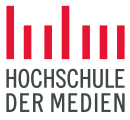Tag: Docker
Deploying Random Chat Application on AWS EC2 with Kubernetes
1. Introduction For the examination of the lecture “Software Development for Cloud Computing”, I want to build a simple Random Chat Application. The idea of this application is based on the famous chat application called Omegle. Omegle is where people can meet random people in the world and can have a one-on-one chat. With Omegle…
Application Updater mit Addon-Verwaltung
von Mario Beck (mb343) und Felix Ruh (fr067) Einleitung Unser Ziel war es, einen Programm Updater für Entwickler zu erstellen, den diese einfach in ihre CI/CD-Pipeline integrieren können. Für die Umsetzung haben wir die IBM Cloud und eine Serverless Architektur verwendet, um eine unbegrenzte Skalierbarkeit zu erreichen. Zu den verwendeten Serverless Services zählen die Cloud…
How do you get a web application into the cloud?
by Dominik Ratzel (dr079) and Alischa Fritzsche (af094) For the lecture “Software Development for Cloud Computing”, we set ourselves the goal of exploring new things and gaining experience. We focused on one topic: “How do you get a web application into the cloud?”. In doing so, we took a closer look at Continuous Integration /…
Migrating from Heroku to Hetzner: Achieving Scalability with Docker, Kubernetes and Rancher
Dockerizing an existing application and deploying it in a Kubernetes Cluster via Rancher to achieve better scalability and cost minimization. Load Testing with Artillery, Monitoring with Prometheus & Grafana and GitHub Actions for CI/CD were used in the process.
Behind the scenes of modern operating systems — Security through isolation (Part 1)
In recent years, since the Internet has become available to almost anyone, application and runtime security is important more than ever. Be it an (unknown) application you download and run from the Internet or some server application you expose to the Internet, it’s almost certainly a bad idea to run apps without any security restrictions…
Autoscaling of Docker Containers in Google Kubernetes Engine
In this blog post we are taking a look at scaling possibilities within Kubernetes in a cloud environment. We are going to present and discuss various options that all have the same target: increase the availability of a service.
Kubernetes: from Zero to Hero with Kompose, Minikube, k3sup and Helm — Part 2: Hands-On
This is part two of our series on how we designed and implemented a scalable, highly-available and fault-tolerant microservice-based Image Editor. This part depicts how we went from a basic Docker Compose setup to running our application on our own »bare-metal« Kubernetes cluster.
Kubernetes: from Zero to Hero with Kompose, Minikube, k3sup and Helm — Part 1: Design
This is part one of our series on how we designed and implemented a scalable, highly-available and fault-tolerant microservice-based Image Editor. The series covers the various design choices we made and the difficulties we faced during design and development of our system. It shows how we set up the scaling infrastructure with Kubernetes and what…
Creating an Email Server Environment with Docker and Kubernetes
As a part of the lecture “Software Development for Cloud Computing” our task was to bring an application into a cloud environment. When we presented our software project MUM at the Media Night in our 4th semester, we talked with a few people about dockerizing MUM together with a whole email server configuration. While brainstorming…
Production Monitoring – Industry 4.0
When I was invited to a design thinking workshop of the summer school of Lucerne – University of Applied Sciences and Arts, I made my first experience with the end user interaction part of Industry 4.0. It was an awesome week with a lot of great people and made me interested in the whole Industry…
